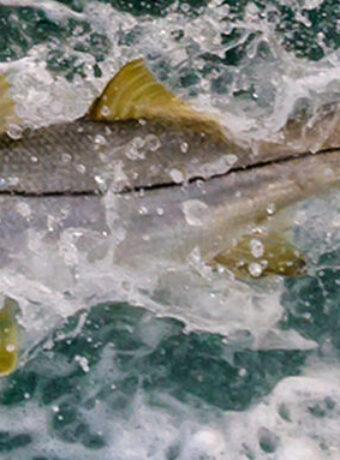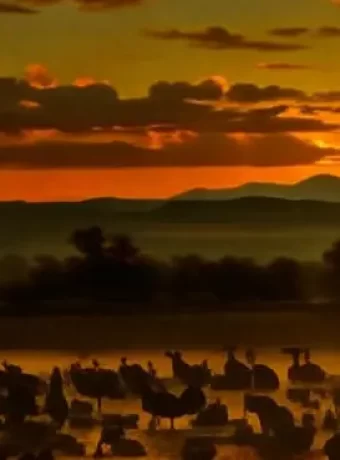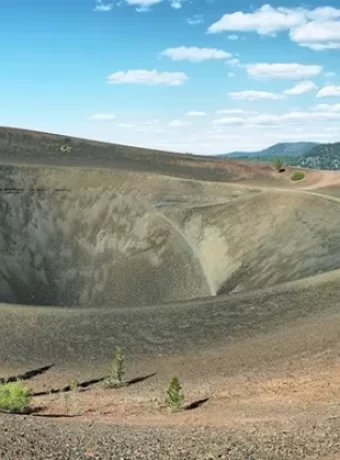Discover the Best Spots for Fly Fishing in Illinois
Fly fishing in Illinois might not be the first thing that comes to mind when you think of the Prairie State. However, this perception often overlooks the state’s diverse and rewarding angling opportunities. Illinois actually holds numerous hidden gems for fly fishers looking to cast a line.
From clear, cold-water streams supporting stocked trout to expansive warm-water rivers teeming with bass, Illinois provides varied environments. These waterways cater to both seasoned anglers and those new to the sport. Exploring Illinois offers a chance to discover quality fishing close to home.
Ready to explore the best spots and learn some local insights for successful fly fishing in Illinois? This guide covers prime locations, target species, gear recommendations, and regulations. Let’s look at how you can make the most of your time fishing these waters.
Table of Contents
Top Fly Fishing Locations in Illinois
Illinois offers a surprising variety of locations suitable for fly fishing, spread across different regions. Each river and lake system presents distinct characteristics and challenges. Here are some of the top spots to consider.
Apple River
Tucked away in northwestern Illinois near the southwestern Wisconsin border, the Apple River is a fly fisher’s delight. It’s particularly known for its healthy brown trout population and exceptional scenic beauty within Jo Daviess County. The river winds through Apple River Canyon State Park, providing good public access and stunning limestone bluffs.
The best times to visit are spring and fall when water temperatures are cooler and flow levels are ideal for wading. The park offers numerous access points for wading and casting a streamer. Be sure to explore the deeper pools and undercut banks where larger trout often hold.
Kankakee River
The Kankakee River, flowing through northern Illinois, is a premier destination for smallmouth bass enthusiasts. Its relatively clear water, combined with a gravel and rock bottom, creates perfect habitat for these hard-fighting sport fish. Numerous access points are available, including Kankakee River State Park, offering miles of fishable water.
Anglers often find success using streamers that mimic baitfish or crayfish, fished near submerged logs, boulders, and current seams. Poppers presented near structure can also entice aggressive strikes, especially during low-light periods. This river provides a genuine Midwest waters bass fishing experience.
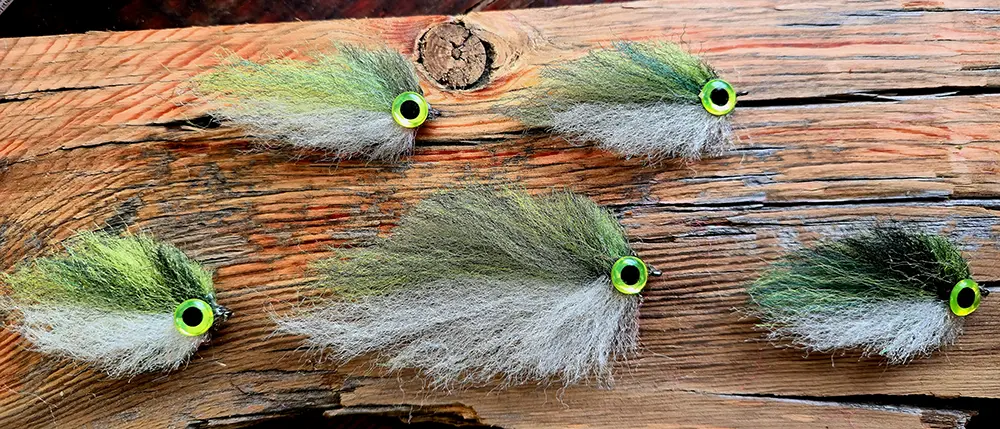
Bull Frog Minnow EP Brush
Fly Fishing Illinois the EP Brush Style Minnow, Tied with Semperfli Bull Frog Predator Fibres. The variegation of this material offers a very effective baitfish Pattern. Out on the the right apparel will make the perfect day even better. On the water our Tranquility Hydrophobic Graphic Hoodie is the perfect outer layer on the water.
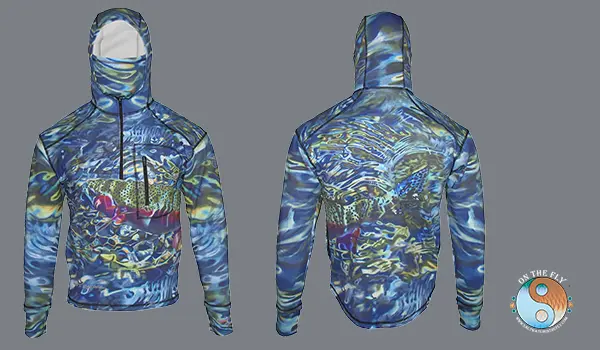
Outdoor Apparel Hydrophobic Heavy Weight Graphic Hoodie
Fox River
The Fox River stretches through northeastern Illinois, offering diverse fishing opportunities along its length. In its upper reaches near the Wisconsin border, anglers can sometimes find stocked trout, while further downstream, smallmouth bass, largemouth bass, northern pike, and even walleye become the primary targets. The river features a good mix of riffles, deeper pools, and steady runs, providing varied structure for fish.
A popular section lies near Yorkville, where a dam creates excellent holding water, concentrating fish. The Fox River provides significant public access through various forest preserves and city parks along its banks. Its accessibility makes it a convenient option for anglers in the Chicago metropolitan area.
Stripping guard on sun protective gloves is a necessity on the trail and water. Another great destination is Montana for a great outdoor excursion.
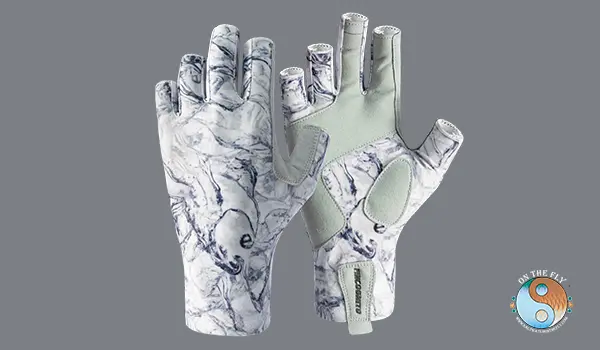
Rock River
The Rock River flows through northern Illinois, entering from Wisconsin and eventually joining the Mississippi River. It’s a substantial waterway known for strong populations of smallmouth bass, channel catfish, walleye, and occasionally northern pike and white bass. The river’s size allows for fishing from boats, but numerous parks and access points also provide opportunities for wading anglers, especially around tributaries and islands.
Areas around Dixon, Oregon, and the confluence with the Pecatonica River are often productive for fly fishing. Focus on current breaks, wing dams, and rocky shorelines. The Rock River offers classic Midwest waters fishing scenarios.
Illinois River
As one of the state’s major waterways, the Illinois River presents vast fly fishing possibilities, though its size can be intimidating. Formed by the confluence of the Kankakee and Des Plaines rivers, it flows through central Illinois before meeting the Mississippi River. Common targets include white bass (especially during spring runs), largemouth bass, catfish, and various panfish like black crappie.
Access can be found at state parks, recreation area sites, and public boat launches along its considerable length. Tributary mouths and backwater areas can be particularly productive spots to explore. Fly fishing here often requires covering water, perhaps from a kayak or boat, to find feeding fish.
Mississippi River
Forming the western border of Illinois, the Mississippi River offers immense and diverse fly fishing opportunities. Anglers can target a wide variety of species, including bass (both largemouth and smallmouth), walleye, sauger, northern pike, catfish, and panfish. The key is focusing on specific areas like wing dams, side channels, backwaters, and tributary mouths where fish congregate.
Access is plentiful through numerous state parks, federal lands, and local parks along the river. Understanding river flows and seasonal fish movements is crucial for success on this massive system. It’s a challenging but potentially very rewarding fly fishing destination.
Smaller Streams and Creeks
Beyond the major rivers, Illinois has numerous smaller streams and creeks worth exploring, particularly for trout and smallmouth bass. Pine Creek, flowing through White Pines Forest State Park, is a scenic option known for occasional stocked trout. Many tributaries feeding the larger rivers, like the Kankakee River or Fox River, can hold surprising numbers of fish, especially smallmouth bass.
Exploring requires some map study and willingness to hike, but can lead to less pressured fishing. Checking with local fly shops or the Illinois Department of Natural Resources (IDNR) can provide leads on productive smaller waters. Remember to respect private property when accessing these streams.
Stocked Lakes and Ponds
Illinois has an active stocking program, providing fly fishing opportunities in various lakes and ponds, especially for trout during cooler months. Locations like the Cook County Forest Preserve District lakes, Silver Springs State Fish and Wildlife Area, and Siloam Springs State Park lake receive stocked rainbow trout and sometimes brown trout. These locations often provide easy public access and are great for introducing beginners to fly fishing.
In central Illinois, the Champaign County Forest Preserve District lakes, such as at Homer Lake Forest Park, offer chances for largemouth bass, bluegill, and catfish crappie. Similarly, Frank Holten State Recreation Area near East St. Louis in south Illinois provides urban fishing access. These stillwaters are ideal for practicing fly casting and targeting bass bluegill combinations.
Lake Michigan
While primarily known for deep water trolling, Lake Michigan‘s shoreline and harbors in northern Illinois offer seasonal fly fishing chances. During spring and fall, anglers can target migrating brown trout and steelhead near harbor mouths and warm water discharges. Shoreline fly fishing for carp and smallmouth bass is also possible during the warmer summer months.
Access is available through Chicago Park District properties and harbors along the lakefront. Weather and wind conditions heavily influence success here. It provides a different kind of Illinois fishing experience compared to rivers and inland lakes.
Text content
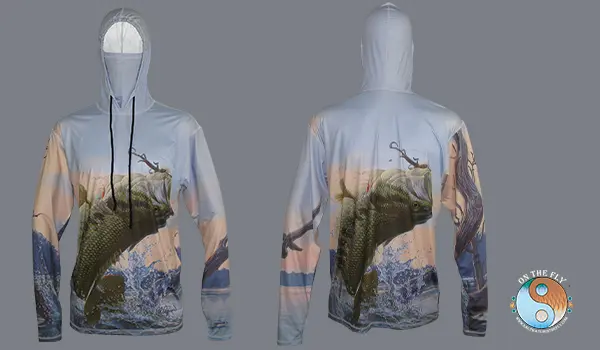
Popular Fly Fishing Spots Overview
To help summarize some key locations, here is a table outlining potential spots:
| Location | Region | Primary Target Species | Notes |
|---|---|---|---|
| Apple River | Northwestern Illinois | Brown Trout, Smallmouth Bass | Scenic canyon setting, state park access. |
| Kankakee River | Northern Illinois | Smallmouth Bass, Northern Pike | Excellent smallmouth habitat, state park access. |
| Fox River | Northern Illinois | Smallmouth Bass, Largemouth Bass, Panfish, Walleye | Diverse fishery, many public access points via county forest preserve areas. |
| Rock River | Northern Illinois | Smallmouth Bass, Catfish, Walleye, White Bass | Large river system, boat and wading opportunities. |
| Illinois River | Central Illinois | White Bass, Largemouth Bass, Catfish, Black Crappie | Major river, backwaters and tributaries are key. |
| Mississippi River | Western Border | Wide variety (including bass, Pike, Walleye, Panfish) | Huge system, focus on structure like wing dams. |
| Silver Springs SFWA | Northern Illinois | Stocked Rainbow Trout, Smallmouth Bass | Stocked trout lake and access to the Fox River. |
| White Pines Forest State Park | Northern Illinois | Stocked Trout (occasional), Smallmouth Bass | Features Pine Creek, beautiful pines forest setting. |
| Siloam Springs State Park | Central Illinois | Stocked Trout, Largemouth Bass, Bluegill | Park lake offers easy access for trout and warm water species. |
| Champaign County Forest Preserves | Central Illinois | Largemouth Bass, Bluegill, Catfish Crappie | Multiple lakes like Homer Lake Forest Park and Lake Lake. |
| Cook County Forest Preserves | Northern Illinois | Stocked Trout, Largemouth Bass, Panfish | Numerous accessible lakes near Chicago receive stocked rainbow. |
Fish Species to Target in Illinois
Illinois waters support a diverse range of fish population groups suitable for fly fishing. Understanding the primary targets can help you choose the right gear and techniques. Here’s a look at some key species.
I hike and wet wade as much as I can and Leggings are very much apart of my outdoor apparel. Take a pair on a Icelandic Fly Fishing Adventure.

Rainbow and Brown Trout
While Illinois isn’t a traditional trout destination, the state’s stocking program provides excellent opportunities, especially through the inland trout program. Several streams, particularly in northern Illinois like the Apple River and sections of Kent Creek, receive stocked trout. Lakes within state parks (Siloam Springs, White Pines Forest) and county forest preserve districts (Cook County, DuPage County) are also regularly stocked with rainbow trout and brown trout.
These stocked rainbow trout are often fully grown rainbow specimens, offering immediate action. Fishing is typically best during the spring and fall catch-and-release seasons or the regular harvest seasons. Anglers often need an inland trout stamp in addition to their fishing license.
Effective fly patterns include standard nymphs like the Pheasant Tail, Hare’s Ear, and the versatile Prince Nymph. When fish are rising, attractor dry flies like the Adams or Elk Hair Caddis, as well as terrestrial patterns in late summer, can be effective. Small streamers can also trigger strikes from these often opportunistic fish.
Smallmouth Bass
Perhaps the most popular sport fish for Illinois river fly fishers, smallmouth bass are abundant in waterways like the Kankakee River, Fox River, Rock River, and numerous smaller tributaries. These fish are prized for their aggressive nature and strong fights. They thrive in rivers with rocky substrates, moderate current, and varied structure.
Streamers imitating baitfish (like Clouser Minnows) or crayfish patterns are go-to choices. Fishing them near submerged rocks, logs, and current seams is often productive. During warmer summer months, topwater flies like poppers and sliders can provide exciting surface action, especially early and late in the day.
Largemouth Bass
Found throughout Illinois in lakes, ponds, reservoirs, and slower sections of rivers like the Illinois River, largemouth bass are another prime target. They often inhabit areas with more vegetation, wood cover, and docks compared to smallmouth. Many county forest preserve lakes and state park lakes offer excellent largemouth bass fishing.
Fly selection includes larger poppers, frog imitations, and divers for topwater presentations. Subsurface flies like weighted Woolly Buggers, large nymphs, and baitfish streamers are effective when bass are holding deeper. Targeting structure and weed lines is key for consistent success.
Northern Pike
Northern pike are ambush predators found in many northern and central Illinois rivers (like the Kankakee River and Fox River) and some larger lakes. They prefer weed beds and slower-moving water where they can surprise prey. Catching a pike on a fly rod is a thrilling experience due to their powerful runs and sharp teeth.
Large, flashy streamers (6-10 inches) are standard fare for pike. Bright colors like chartreuse, red, and white often work well. A wire leader or heavy fluorocarbon tippet is essential to prevent bite-offs.
Panfish (Bluegill, Crappie)
Don’t overlook panfish like bluegill and black crappie, often grouped as bass bluegill or catfish crappie depending on the water body. They are widespread in lakes, ponds, and slower river sections across Illinois and readily take flies. They provide consistent action, especially for beginners or when other species are uncooperative.
Small nymphs (like Pheasant Tails or Zebra Midges), wet flies (like soft hackles), small poppers, and foam spiders work well. Target areas around docks, submerged vegetation, and brush piles. Panfish offer fun, light-tackle fly fishing throughout the warmer months.
Other Species
Illinois waters host other interesting species accessible to fly anglers. White bass make spring spawning runs up major rivers like the Illinois River and Mississippi River, offering fast action with small streamers. Carp are found statewide and provide a challenging sight-fishing target on flats and shallow shorelines.
For a truly different experience, targeting gar with specialized rope flies in warm, slow-moving waters presents a unique challenge. Catfish, particularly channel catfish, can sometimes be caught on large, smelly streamer patterns fished near the bottom in rivers and lakes. This wide variety keeps Illinois fishing interesting.
Baitfish patterns tied in many variations like the Clouser Minnow is a main staple in the fly box. For great Pacific Coast Fly Fishing Baja is perfect destination.
Seasonal Fly Fishing in Illinois
Fishing conditions and target species activity vary significantly throughout the year in Illinois. Understanding these seasonal changes helps anglers plan successful trips.
Spring (March – May)
As ice melts and waters gradually warm, fish activity increases across the state. Spring is prime time for the inland trout program, with initial stockings occurring and catch-and-release seasons opening on specific streams. Trout are often aggressive after winter and readily take nymphs and small streamers.
Bass, including bass like smallmouth and largemouth, begin moving towards shallower areas for pre-spawn feeding. Look for them on flats adjacent to deeper wintering holes. Early spring rains can raise river levels, so monitoring flows is important, especially on rivers like the Kankakee River and Fox River.
Summer (June – August)
The summer months offer peak warm-water fly fishing. Smallmouth bass fishing on rivers is typically excellent, with fish actively feeding, especially during morning and evening hours. Topwater action for both smallmouth and largemouth bass can be outstanding.
Panfish are very active in lakes and ponds. This is also a good time to target carp on the flats or try for gar in sluggish backwaters. Be mindful of high water temperatures, especially in smaller streams, which can stress trout if present.
Fall (September – November)
Cooling water temperatures trigger aggressive feeding behavior in many species as they prepare for winter. Fall can offer some of the best river fishing for smallmouth bass. Trout fishing picks up again with fall stockings for the inland trout program.
Anglers often find success using larger streamers and nymphs, imitating the larger food items fish target before winter. The changing foliage along rivers like the Apple River or in White Pines Forest also makes fall a beautiful time to be on the water. Pay attention as open water opportunities might decrease later in the season.
Winter (December – February)
Winter presents the toughest conditions but doesn’t completely shut down Illinois fishing. Some dedicated anglers target trout in spring-fed streams or tailwaters below dams where water remains slightly warmer and ice-free. Some Cook County Forest Preserve lakes may offer ice fishing if conditions permit, though fly fishing becomes limited.
This season is often an excellent time to focus on fly tying, restocking fly boxes with effective fly patterns like the Prince Nymph for the upcoming spring. Planning trips and maintaining gear are also productive winter activities. Safety is paramount when fishing near cold water or ice.
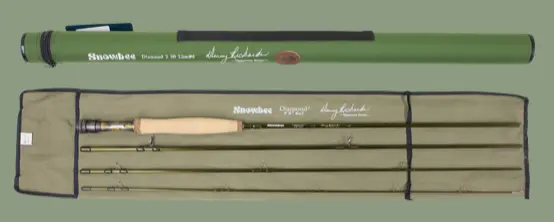

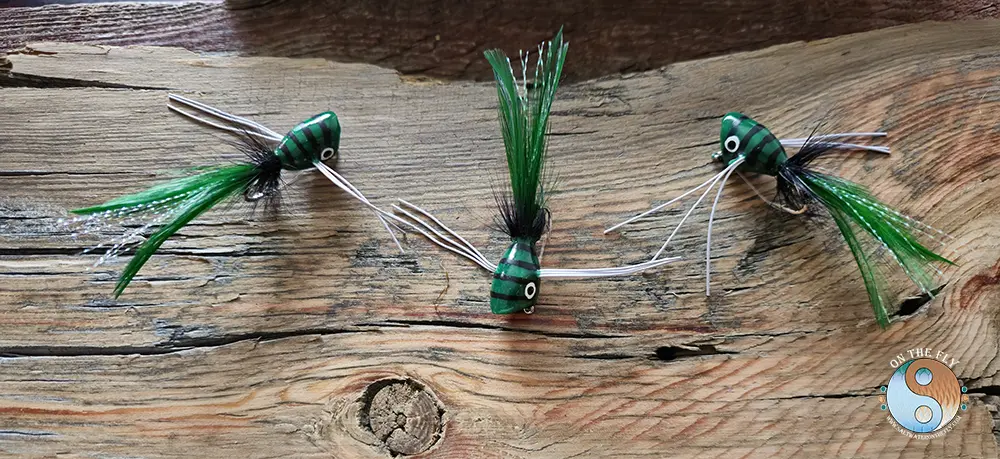
Essential Gear for Fly Fishing in Illinois
Having appropriate gear enhances your effectiveness and enjoyment when fly fishing in Illinois. While needs vary based on target species and location, some core equipment is generally applicable.
-
Fly Rod: A 9-foot, 6-weight fly rod is arguably the most versatile choice for Illinois. It handles most trout situations, panfish, and average-sized bass well. For dedicated smallmouth bass fishing on rivers like the Kankakee River, or for largemouth bass and northern pike, stepping up to a 6 or 7-weight fly rod provides more power for casting larger flies and fighting bigger fish.
-
Reel: A reliable reel with a smooth drag system that balances your chosen fly rod is sufficient. For most Illinois fishing, an expensive reel isn’t necessary, but durability is important. Ensure it holds your fly line and adequate backing.
-
Fly Line: A weight-forward floating line matching your rod weight is the standard for most situations, suitable for dry flies, nymphs, and small streamers. Consider having a sink-tip or full sinking line available if you plan to fish deeper water for bass, walleye, or trout in lakes.
-
Leaders and Tippet: Carry tapered leaders, typically 7.5 to 9 feet long. Tippet sizes from 3X down to 6X will cover most scenarios, with 3X-4X common for bass and 4X-6X standard for trout and panfish. Fluorocarbon tippet can be advantageous for nymphing and streamer fishing due to its abrasion resistance and lower visibility.
-
Flies: A well-rounded selection is crucial. Include standard trout nymphs (Pheasant Tail, Hare’s Ear, Prince Nymph, Copper John), dry flies (Adams, Elk Hair Caddis, Griffith’s Gnat, terrestrials), and streamers (Woolly Bugger, Clouser Minnow). Add bass poppers, crayfish patterns, and larger baitfish imitations if targeting bass or pike. Researching local hatches or effective fly patterns for specific waters is beneficial.
-
Waders and Boots: Breathable chest waders are comfortable for wading rivers and streams during most of the year. Neoprene waders offer more insulation for colder water in early spring, fall, or winter. Sturdy wading boots with felt or rubber soles (check regulations, felt may be restricted) provide traction on slippery river bottoms.
-
Accessories: Essential accessories include polarized sunglasses (crucial for spotting fish and structure), a hat for sun protection, nippers for cutting line, forceps for hook removal, floatant for dry flies, strike indicators for nymphing, and a landing net (preferably rubber mesh to protect fish slime). A wading staff can aid stability in faster currents or uneven terrain.
-
Fly Vest or Pack: A vest, chest pack, or sling pack helps organize fly boxes, tools, leaders, tippet, and other essentials, keeping them readily accessible while fishing.
Fly Tying
Many anglers enhance their experience through fly tying. Creating your own fly patterns adds another dimension to the sport and allows customization for specific Illinois waters or hatches. Basic fly tying tools and materials can be acquired relatively affordably, providing a rewarding activity, especially during the off-season.
Fly Fishing Regulations in Illinois
Adhering to fishing regulations is vital for conserving Illinois’s fishery resources for future generations. Before heading out, familiarize yourself with the rules set by the Illinois Department of Natural Resources (IDNR).
-
Fishing License: All anglers aged 16 and older must possess a valid Illinois fishing license. Licenses can be purchased online through the IDNR website or at various license vendors throughout the state. Be sure to carry your license while fishing.
-
Trout Stamp: If you plan to fish for trout (including catch-and-release), you typically need an inland trout stamp in addition to your fishing license. This applies to both stocked trout waters and streams with resident populations. Check current regulations as specific requirements for the trout stamp can apply to certain locations or seasons.
-
Seasons, Size Limits, and Bag Limits: Regulations vary significantly depending on the species and the specific body of water. Some locations may have special rules, such as catch-and-release only periods (common for trout), specific lure restrictions (e.g., fly fishing only), or slot limits. Always consult the current Illinois Fishing Information booklet, available on the IDNR website or where licenses are sold.
-
Access: While Illinois offers considerable public access through state parks, wildlife area properties, and county forest preserve districts, some waters flow through private land. Always respect private property rights and obtain permission before entering private land to access a river or stream. Look for designated access points.
The IDNR website is the definitive source for the most current regulations governing Illinois fishing. Checking for updates before each trip is a good practice as rules can change. Responsible angling includes knowing and following these guidelines.
Fly Fishing Etiquette in Illinois
Practicing good on-stream etiquette contributes to a positive experience for all anglers and helps protect the resource. Keep these considerations in mind:
-
Give Anglers Space: Avoid crowding other anglers. If someone is fishing a particular pool or run, give them ample space or move to a different area. A good rule of thumb is to stay out of sight or at least a long cast away from others already fishing.
-
Respect Wading Paths: If wading downstream, try to exit the river and walk around anglers fishing below you, rather than wading through the water they are targeting.
-
Practice Catch and Release Carefully: If practicing catch and release, handle fish minimally, keep them wet, and release them quickly. Use barbless hooks to make hook removal easier and less damaging. Proper handling increases survival rates, especially for sensitive species like trout.
-
Leave No Trace: Pack out everything you bring in, including waste line, tippet scraps, and any trash. Leave fishing spots cleaner than you found them. Protecting the natural beauty of areas like White Pines Forest or along the Apple River is essential.
-
Mind Your Backcast: Be aware of your surroundings when fly casting, especially in areas with foot traffic, trees, or other anglers nearby. Safety and courtesy are important.
-
Sharing Information: While respecting personal fishing spots is fine, being generally helpful and sharing basic information (like what flies are working) with fellow anglers often fosters goodwill on the water.
Conclusion of Fly Fishing Illinois
Fly fishing in Illinois offers a surprisingly rich and diverse experience, far exceeding initial expectations. From the cool trout streams of northwestern Illinois like the Apple River to the productive smallmouth bass fisheries of the Kankakee River, Fox River, and Rock River, anglers have numerous choices. Add opportunities on major systems like the Illinois River and Mississippi River, stocked trout in accessible park lakes within Cook County or Champaign County Forest Preserve districts, and even shoreline chances on Lake Michigan, and the breadth of Illinois fishing becomes clear.
Understanding the state’s fish population, seasonal variations, and effective techniques like fly casting and matching local fly patterns improves success. Equipping yourself with the right fly rod and gear, and staying current on regulations from the Illinois Department of Natural Resources, including the need for an Illinois fishing license and potentially an inland trout stamp, are crucial steps. Exploring public access points at state parks, forest preserve areas like White Pines or Silver Springs, and respecting fellow anglers ensures enjoyable and sustainable fishing.
The Prairie State holds genuine rewards for those willing to explore its Midwest waters. So, gather your gear, consider some fly tying, select your fly patterns like the reliable Prince Nymph, and venture out to discover the excellent fishing opportunities Illinois provides. You might just find your new favorite fishing spot close to home. Or right next door some great Ohio Bass Fly Fishing.



